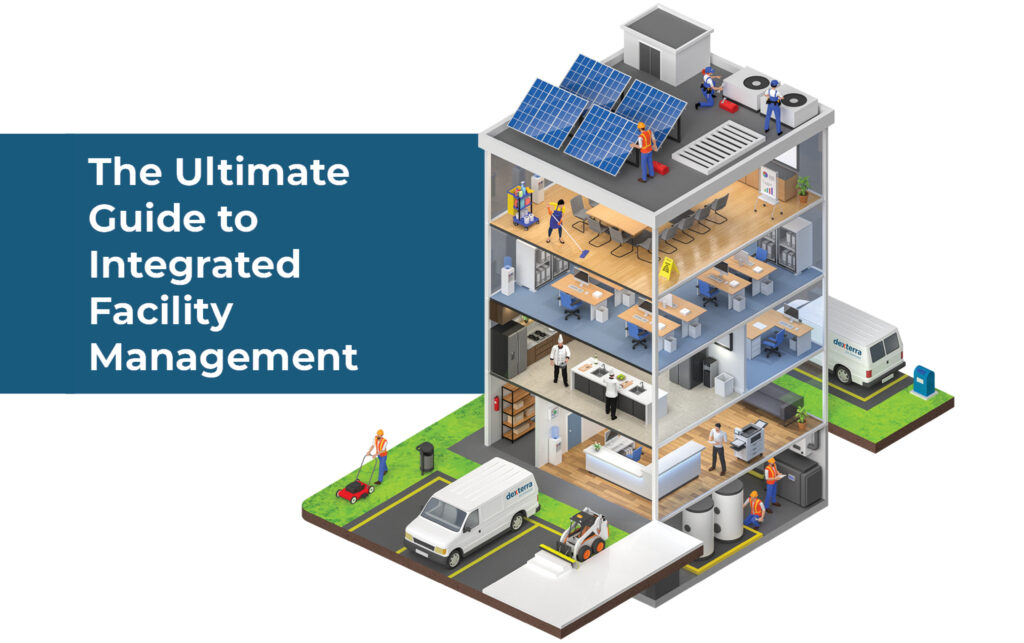Top Benefits of Total Facility Management for Streamlined Workflow
Total Facility Management (TFM) stands for a tactical approach to boosting operational efficiency by integrating different services, such as upkeep and security, under a unified management framework. The concern remains: what details advantages can organizations harness from embracing TFM, and just how might these benefits change their operational landscape?
Enhanced Operational Effectiveness
Boosted functional efficiency is a main advantage of implementing total facility management (TFM) strategies. TFM includes an extensive strategy to managing a facility's resources, procedures, and infrastructure, inevitably simplifying procedures. By consolidating different services-- such as upkeep, space, cleaning, and security management-- TFM boosts and minimizes redundancies coordination amongst various functional features.
The integration of technology further enhances this effectiveness. Advanced facility management systems provide real-time data analytics, allowing facility supervisors to make informed choices that boost operations and resource appropriation. Predictive maintenance methods, for instance, prepare for devices failures prior to they happen, reducing downtime and expanding asset life expectancy.
Additionally, TFM promotes standardized procedures across various departments, guaranteeing uniformity and high quality in solution distribution. This harmony minimizes operational interruptions and promotes an extra joint workplace. As an outcome, employees can concentrate on their core duties, driving efficiency and enhancing general performance.

Price Reduction and Savings
Applying total facility management (TFM) not only improves operational performance yet likewise significantly adds to cost reduction and savings. By settling numerous solutions under a solitary management structure, companies can remove redundancies and streamline processes, thus reducing operational prices. TFM allows far better purchase methods, enabling companies to negotiate bulk investing in arrangements with suppliers and solution carriers, leading to reduced rates.
Furthermore, TFM highlights preventative upkeep, which minimizes unforeseen breakdowns and prolongs the lifespan of important equipment. This aggressive technique not only minimizes repair work costs but additionally enhances the dependability of facilitiess, guaranteeing continuous procedures. In addition, energy effectiveness initiatives, typically a crucial emphasis of TFM, cause considerable cost savings on utility bills, as facilitiess are maximized for lowered power intake.
Improved Resource Management
Efficient resource management is a cornerstone of total facility management (TFM), allowing organizations to enhance using their possessions and workforce. By executing TFM strategies, companies can adequately examine their resource allotment, ensuring that every property is used effectively and efficiently. This alternative method permits the recognition of underperforming resources and the potential for reallocation or improvement.
In addition, TFM facilitates the assimilation of innovation for real-time monitoring of sources, which helps in forecasting upkeep needs and protecting against expensive downtime. By leveraging data analytics, companies can make informed choices about source deployment, inevitably improving performance and minimizing waste.
Moreover, TFM advertises a culture of constant renovation, motivating groups to on a regular basis evaluate and fine-tune their source management techniques. Total Facility Management. This proactive position not just reduces functional disruptions however additionally fosters technology, as employees are equipped to recommend improvements based on their direct experiences with resource usage
Streamlined Interaction Networks
In total facility management, structured communication channels play a critical role in promoting cooperation and efficiency across teams. Reliable interaction ensures that all stakeholders, including facility supervisors, upkeep staff, and provider, are straightened with operational demands and business objectives. By developing clear lines of interaction, teams can swiftly deal with worries, share updates, and apply remedies, thereby reducing downtime and improving efficiency.
With streamlined communication platforms, info is quickly available, permitting real-time updates on upkeep demands, source allowance, and job timelines. This openness not only decreases misunderstandings however likewise equips employees to make informed decisions quickly. Furthermore, structured interaction assists in much better control throughout emergency situations, making certain that all employees are notified and can respond quickly.

Boosted Emphasis on Core Activities
A key advantage of total facility management is the raised focus on core activities, enabling organizations to focus on their key business objectives - Total Facility Management. By outsourcing non-core functions such as protection, upkeep, and cleansing, firms can reroute their sources and power in the direction of critical campaigns that straight add to their affordable benefit and growth
Total facility management incorporates numerous functional jobs under a solitary umbrella, promoting effectiveness and lessening read what he said redundancy. This debt consolidation not just enhances processes but also enhances liability, making certain that every facet of the facility operates harmoniously without drawing away focus from what genuinely matters-- core company functions.
Furthermore, this approach makes it possible for workers to devote their effort and time to jobs that drive technology and enhance customer satisfaction, instead of obtaining bogged down by operational challenges. With a reliable facility management companion managing day-to-day procedures, companies can achieve better agility, respond quickly to market changes, and keep a sharper focus on their mission.
Ultimately, increased focus on core activities causes boosted overall performance, allowing companies to reinforce their market setting and accomplish their tactical objectives better. - Total Facility Management
Conclusion
In verdict, Total Facility Management significantly enhances operational efficiency by combining vital visit our website solutions and leveraging information analytics for educated decision-making. Price decreases and boosted source management add to general cost savings, while structured communication channels foster partnership among stakeholders.
Total Facility Management (TFM) stands for a critical strategy to boosting functional effectiveness by incorporating different services, such as maintenance and security, under a unified management structure.Boosted functional effectiveness is a primary benefit of implementing total facility management (TFM) strategies. Advanced facility management systems supply real-time data analytics, enabling facility supervisors to make educated decisions that improve operations and source allowance.Executing total see this facility management (TFM) not only enhances functional effectiveness but additionally substantially contributes to set you back decrease and cost savings.Effective source management is a cornerstone of total facility management (TFM), allowing organizations to maximize the use of their assets and labor force.